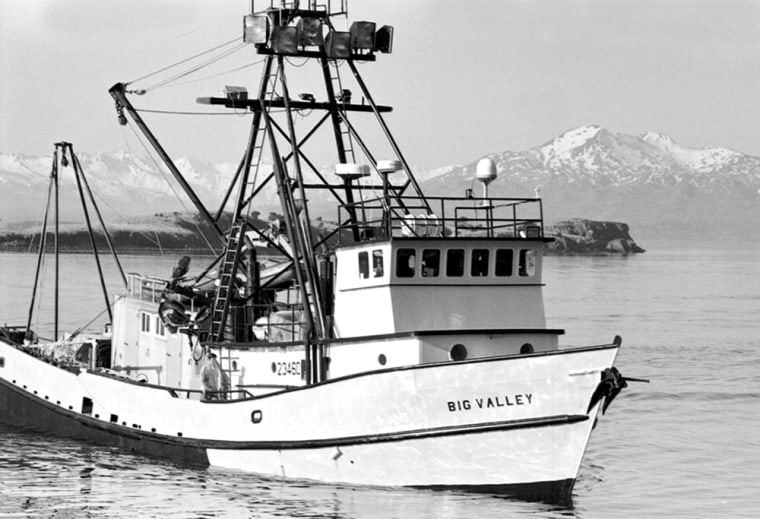Two fishermen were killed and four others were missing in the choppy Bering Sea after two separate accidents on the opening day of the dangerous snow crab season.
The 92-foot Big Valley and the 134-foot Sultan went out after snow crab amid stormy seas and up to 40 mph winds. The Kodiak-based Big Valley sank Saturday 70 miles west of St. Paul Island, about 750 miles west of Anchorage.
Three crewmen found by helicopters Saturday were wearing bulky survival suits, but two of them died. Cache Seel, 30, of Kodiak, was treated at a Saint Paul hospital after he was found floating in a life raft.
Kodiak resident Gary Edwards, the skipper and owner of the Big Valley, was aboard the vessel and among the three missing, Seel told authorities, said Coast Guard Lt. Charter Tschirgi. There were believed to be six men aboard.
Also missing was a crewman washed off the Sultan 150 miles northwest of St. Paul Island. Alaska State Troopers identified him Sunday as Manu Lagai, 33, of Spokane, Wash. Lagai was wearing only rain gear, not a survival suit, when he went overboard, said trooper spokesman Tim DeSpain.
The search was to continue Monday, said Chief Petty Officer Darrell Wilson.
Sunday’s search took place in 12-foot seas. In the 37-degree water, the survival rate is estimated at slightly more than five hours for people wearing survival gear, according to Wilson.
“But that’s just a chart,” he said. “A lot depends on how healthy you are to begin with, how much body fat you have. So the numbers are kind of approximate. We’ve been proven wrong many times.”
A major reason fishing for king and snow crab is so dangerous is that the shellfish are harvested in winter, when their legs are fullest with meat. Boats heave and dive in rough weather, large waves break over the gunwales, and wooden deck planking often ice over.
In the race for crab, fishermen skip sleep to launch and haul hundreds of 600-pound steel traps that capture the crabs on the sea floor.
From 1991 to 1996 in Alaska’s crab fisheries, 61 people died, with most of the fatalities occurring when boats were operating in heavy weather, according to a study from the National Institute for Occupational Safety and Health.
For the past four seasons, the winter snow crab fishery saw no vessels sink and no one die. The season that began Saturday may be the last derby-style crab fishery before individual fishing quotas kick in.
